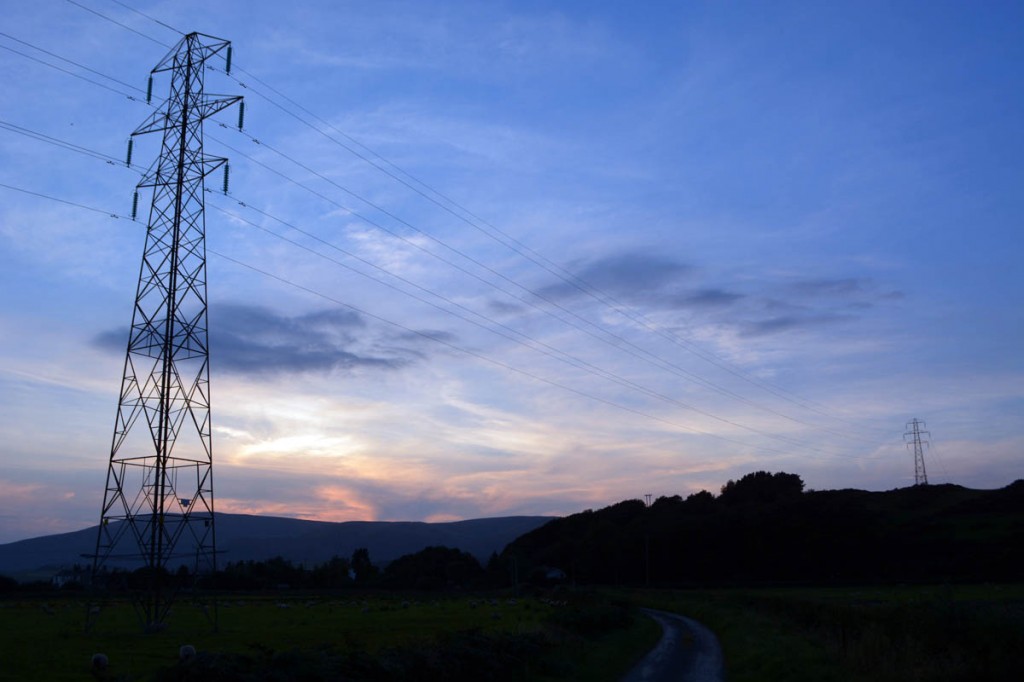Campaigners say the beauty of a national park is threatened by plans to build a power line with pylons as high as Nelson’s Column.
The Friends of the Lake District said the proposed pylons would form the largest electricity infrastructure project in the UK, in the West of the national park.
The group said the power transmission line, to serve a new nuclear power station near the existing Sellafield installation, would be a dreadful addition to a national park currently seeking world heritage status.
National Grid has revealed its preferred option for the 400kV transmission line, passing through 24km (15 miles) of the Lake District national park, near Ravenglass, Bootle, Silecroft and the lower Duddon Valley, including Broughton-in-Furness.
Friends of the Lake District and other activists have launched a campaign to stop the pylons being erected within the national park, and are calling for power cables to be put underground.
They are urging people to write to National Grid, their MPs and the Government to demand that cables are buried where they cross the Lake District national park.
Kate Willshaw, policy officer at Friends of the Lake District, said: This is not a case of preventing infrastructure development going ahead.
“There is an opportunity for everybody to benefit if we can persuade Government and National Grid that they can achieve the connection of the power station without compromising the natural beauty of the Lake District.”
The Friends said National Grid is currently refusing to discuss burying the line and has put forward only different pylon line routes within the national park as ‘mitigation’.
Douglas Chalmers, director at Friends of the Lake District, said: “National Grid has said that the costs are too high to mitigate for the damage to the national park by placing cables underground.
“If we were talking about solid rock and steep inclines they might have case, but this land includes arable fields and improved grassland which makes undergrounding easier and recovery much faster.
“Last year it was announced with great fanfare that Ofgem’s Visual Impact Provision project is to provide £500m to underground existing power lines in other national parks.
“We’re simply asking National Grid to afford residents, visitors and those businesses that rely on the park and its stunning landscapes for their livelihoods a similar level of consideration and sensitivity.”
National Grid is holding 27 communication events along the proposed route to discuss their plans. The Friends said they may be the last opportunity for people to have their say in person. National Grid has stated that it needs to make the decision on the technology used by the start of December 2015.
Ms Willshaw said: “People can visit www.saynotopylonsinthelakedistrict.org.uk where they’ll find all the help they’ll need to join our campaign and play their part in protecting the national park.”

Graeme Robb
15 September 2015Meanwhile not a million miles away the realisation of the mistake of putting pylons in NPs has dawned on the powers that be and they are spending millions removing them
David Graham
17 September 2015No pylons, no wind farms in Or near Lake District
Graham Pitts
20 September 2015It seems madness to be using taxpayer's money to take down pylons, while proposing putting up new ones in the Lake District to cause exactly the same problem. Then the taxpayer pays again to remove them?
Stop it now while it is still in design.
You can have the jobs without trashing the countryside.
OutdoorsAndy
23 September 2015Well at least they ain't fracking in the area.
Now thats a real threat to our countryside!
I would have pylons over fracking any day...
but I agree, underground is the way to go here.